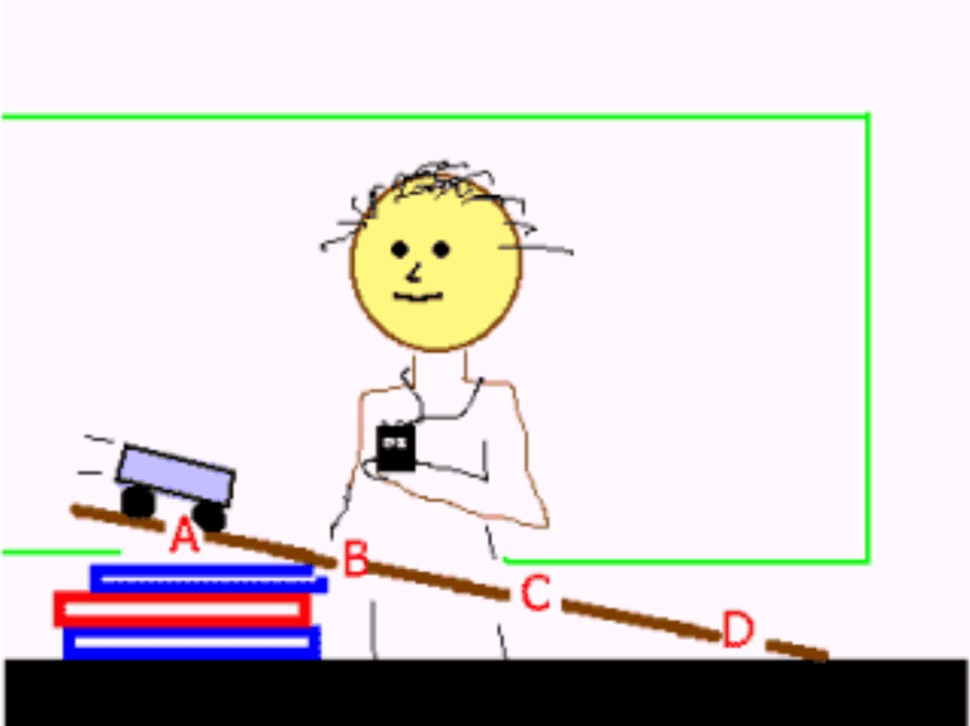
Overview
Title: Ramp It Up Challenge
Grade: 4th Grade
Duration: Two – 45 Minute Lessons
Science – SC.4.P.10.1
Observe and describe some basic forms of energy, including light, heat, sound, electrical, and the energy of motion (kinetic energy).
Mathematics – MAFS.K12.MP.1
Classify two-dimensional figures based on the presence or absence of parallel or perpendicular lines, or the presence or absence of angles of a specified size. Recognize right triangles as a category,and identify right triangles.
Language Arts – LAFS.4.L.3.4
- Determine or clarify the meaning of unknown and multiple-meaning words and phrases based on grade 4 reading and content, choosing flexibly from a range of strategies.
- Use context (e.g., definitions, examples, or restatements in text) as a clue to the meaning of a word or phrase.
- Use common, grade-appropriate Greek and Latin affixes and roots as clues to the meaning of a word (e.g., telegraph, photograph, autograph).
- Consult reference materials (e.g., dictionaries, glossaries, thesauruses) both print and digital, to find the pronunciation and determine or clarify the precise meaning of keywords and phrases.
Objectives
The student will ….
- Engage in dialogue with the science and math terms presented.
- Make reasonable predictions about both potential and kinetic energy.
- Use information, observations, and knowledge to revise designs and answer the guided questions throughout the lesson.
- Have reasonable knowledge of energy in motion.
Vocabulary
Energy • Ramps • Angles • Measurement • Kinetic Energy • Potential Energy • Investigate • Construct • Fastest • Farthest • Accuracy
Prediction
Before students test out ramps, have kids make predictions:
- How does the height of the ramp have any effect on the speed and or distance of the ball?
- How do different angles affect the speed and distance of a ball ?
- Which ramp do they think will make the ball go the farthest and the fastest?
Materials
Student group tables will have:
- Tennis balls
- Duct tape (painter’s tape may not as sturdy but it’s easier to remove)
- Ruler
- Pencil
- Blocks
- Paper
Procedure
Prior to starting students MUST put their engineering hats on.
Engineers use the engineering design process when solving a problem. They should use this process as they create the design of the ramp(s).
The engineering process involves 5 main steps. Review this process with them. Students should answer questions on a separate sheet of paper
- ASK questions that will help you achieve your goal.
- IMAGINE at least two possibilities for design.
- What could be some solutions?
- Brainstorm ideas.
- PLAN the design before building.
- Combine ideas to come up with a final design.
- Make a list of the materials needed.
- CREATE at least one design solution.
- Follow the plan and create it.
- IMPROVE the current design based on evidence around the original design criteria.
- Make the design better.
- Test it out!
After
- Have kids select a group of 3 blocks to create height of ramp.
- Have them secure the ramp with tape.
- Place ruler at an angle over the blocks to create an off-ramp.
- Secure with tape.
- Measure angle(s) of ramp.
- Roll the ball to investigate speed and distance.
- Have kids measure the distance produced by each ramp.
- Use the timer to determine which ramp makes the balls go faster.
- Complete the process again increasing the height of the ramp by 5, 7, 9 etc…
- Compare the findings.
Summative Reflective Assessment
Students will write a reflection paper on their experience and the knowledge they gained during the learning challenge.
Use the following questions as a guide.
- Was your first design successful? Why or why not?
- Did the data your group collected throughout the challenge help the group make decisions?How?
- How did your group decide which building materials would be used?
- What modifications were made to your original design? If these proved successful, explain why?
- What contributions did you make as a member of your group when completing this challenge?
Discussion (5 Minutes)
The teacher will ask students:
- To describe any similar ideas (multiple groups used).
- To describe different ideas groups came up with.
- Why they think some designs came closer to meeting their prediction?
- Did your team’s design meet the goal? Why or why not?
- Did your design improve? How?
- Are there any changes you would still like to make to your design? Why?
- What did you learn about kinetic energy in completing this challenge?
